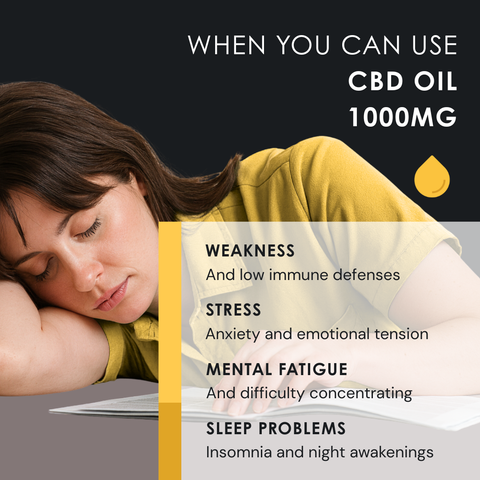Sometimes it happens suddenly: the feeling of vertigo and anxiety, legs that waver, the stomach in turmoil. Other times it’s a constant companion, annoying but not overwhelming. It doesn’t mean weakness: it’s the way the nervous system, breathing, balance, and muscle tension communicate with each other. In the following paragraphs, we will analyze why vertigo and anxiety tend to intertwine, what signs to watch for, and how to build a relief routine with natural remedies, based on what is reported in the scientific literature.
Anxiety and vertigo: what to know
When anxiety starts to build, breathing and posture change: breathing becomes faster and shallower, the neck muscles stiffen, and attention shifts to micro-imbalances. Hyperventilation can lower CO₂ levels in the blood (hypocapnia) and temporarily reduce cerebral blood flow, causing—among the most common causes of anxiety and vertigo—a feeling of lightheadedness and instability.
There is also PPPD (Persistent Postural-Perceptual Dizziness), a functional disorder in which non-rotational vertigo persists for weeks (if not months) and worsens with upright posture, movement, and complex visual stimuli. It often originates after vestibular stress (even a fright) and is maintained through hypervigilance and protective behaviors.
In short: anxiety and vertigo interact in a bidirectional way. Anxious activation amplifies bodily sensations, and sensations of instability fuel anxiety.
Common symptoms of anxiety and vertigo
Experiences vary from person to person (subjective anxiety and vertigo), but some typical patterns tend to recur. Here’s how to recognize them without alarm.
● Unsteadiness and a feeling of instability: many describe the sensation of walking on a “soft floor” or taking uncertain steps, especially in supermarket aisles or when staring at screens for a long time. This happens because the eyes receive many stimuli in a short time and the brain struggles to integrate them, and in conditions such as PPPD, symptoms tend to intensify in visually rich environments.
● Heavy head, nausea, and headache: if the neck is stiff and posture tends to “close forward,” the cervical muscles remain tense, and the neck’s receptors send unclear signals. From this may arise the feeling of instability, a heavy head, and at times, headaches that seem to worsen when one is tired or sits for long periods.
● Anxiety, vertigo, and lightheadedness: during phases of strong activation—such as, for example, during a peak of anxiety or a panic attack—breathing becomes rapid and shallow, tingling may appear in the hands or around the mouth, and that hard-to-ignore feeling of an “empty head” sets in. Often, the key is simply to slow the breath and find a steady rhythm, helping the body return to balance.
● Sudden vs. continuous anxiety and vertigo: sudden episodes are frightening because they appear out of nowhere and give the impression of losing control, while continuous symptoms suggest functional conditions such as PPPD, which usually improve through a gradual process of exercises, guided exposures, and breathing regulation techniques.
But beware of false alarms: vertigo linked to anxiety is rarely “purely” rotational as in BPPV (Benign Paroxysmal Positional Vertigo); however, if instability is accompanied by weakness or numbness on one side of the body, difficulty speaking, double vision, or severe headaches, it is important to seek urgent medical evaluation.
Causes of anxiety and vertigo
After clarifying what one feels, let’s look at where the problem may come from. The causes of anxiety and vertigo often add up: recognizing them helps you intervene in a targeted way.
● Stress and panic attacks (acute activation): when the alert system switches on, the body prepares its response — vigilance increases, muscle tone and heart rhythm change, and attention locks onto bodily signals. If episodes occur around deadlines, crowded places, or situations perceived as demanding, chronic stress is a plausible explanation.
● Breathing alterations: even away from emotional peaks, habits such as breathing high in the chest, sighing often, or holding the breath can destabilize internal balance. Typical clues include difficulty sensing deep breaths, a frequent need to yawn, and a feeling of lightheadedness after long conversations or calls.
● Neck and muscle tension: a stiff neck, raised shoulders, or prolonged computer work alter the signals coming from the cervical receptors. Integration with vision and the inner ear becomes less precise, and posture adopts a more “cautious” pattern. If discomfort worsens after many hours sitting and improves with warmth, gentle movement, or active breaks, a cervical component is likely.
● Traumatic experiences and hypervigilance: after a fall, a spell of illness, or a bad vertigo episode, it’s common to stay alert to one’s balance and start avoiding certain movements or feared places. This reinforces the fear–avoidance–sensitization loop. Small steps of guided exposure help reverse it.
● Relation to other conditions: low mood and persistent worries can increase perceptual load. The same goes for tinnitus, which during stressful periods draws attention and amplifies the sense of instability. If you notice that insomnia, marked fatigue, or periods of sadness occur alongside dizziness, it’s worth addressing the picture in an integrated way.
Natural remedies for anxiety and vertigo
These strategies offer a good balance between expected benefits and risks, and they work best when practiced consistently and combined into a simple routine you can truly maintain over time. The goal isn’t to eliminate symptoms all at once, but to give the nervous system coherent signals of safety and gradually reestablish, day by day, a more stable equilibrium.
● Breathing and relaxation techniques: dedicate 5–10 minutes to slow, regular breathing, aiming for about six breaths per minute and making sure the diaphragm really moves. This tends to improve heart rate variability, gradually lower activation, and make moments of instability easier to manage, especially if you pair the exercise with muscle release in the shoulders and neck.
● Mindfulness and meditation: incorporating a structured program into your week, such as MBSR (Mindfulness-Based Stress Reduction), helps reduce rumination (repetitive negative thinking) and hypervigilance. In a randomized study, it was shown to be not inferior to escitalopram in treating anxiety disorders. This means that, for many people, systematically practicing mindful attention techniques can be a solid part of the processes, especially when combined with breathing education and small lifestyle changes.
● Moderate physical activity and cervical stretching: moving regularly (brisk walking, shoulder and neck mobility exercises, gentle strengthening) promotes a more stable mood and improves proprioception. When there is a cervical component, a recent study indicates that well-structured manual and motor approaches can help reduce the sense of vertigo and anxiety, especially when calibrated to posture, load, and recovery times.
● Nutrition and hydration: maintaining regular meals and good hydration helps prevent drops in energy that can be mistaken for dizziness. Reducing caffeine intake if you’re sensitive (especially in the afternoon and evening) can make a difference in sleep quality and anxiety balance. The European Food Safety Authority considers up to 200 mg as a generally safe single dose for healthy adults, but high doses or those taken too close to bedtime can increase restlessness and worsen days when nausea and instability are more pronounced.
● Herbal remedies (passionflower, valerian, hawthorn): clinical studies on passionflower suggest a possible anxiolytic effect, although the methodological quality is uneven and calls for caution in interpretation. For this reason, if chosen, it’s best included within a broader plan that also involves breathing, movement, and sleep hygiene. For valerian, evidence is stronger regarding sleep than anxiety, but in some people, targeted evening use helps ease tension and facilitate falling asleep, with indirect effects on next-day reactivity. Hawthorn has a traditional use for tension and palpitations: for those taking cardiovascular medications or with known conditions, it’s essential to consult a doctor to assess possible interactions and choose appropriate dosages.
● CBD-based products: cannabidiol is not psychoactive like THC and, in experimental settings simulating public speaking, a single administration reduced anxiety levels compared to placebo. Evidence on prolonged use remains mixed, and since CBD can interfere with liver enzymes in the CYP450 family, anyone undergoing pharmacological treatment should discuss it with their doctor before including it in their wellness routine. To learn more about supply chain aspects and quality analyses, you can consult the Eusphera line of CBD oils.
Are you looking for a daily routine to prevent anxiety and vertigo? Start with 3 minutes of slow breathing, counting inhalations to four and exhalations to six. Continue with 5 minutes of cervical mobility, making small, slow movements in all directions, then finish with 2–5 minutes of guided mindfulness, focusing on bodily sensations. Repeated daily, for a total of about fifteen minutes, this sequence builds an accessible habit that, over time, helps stabilize the days when vertigo and anxiety are most noticeable.
When to see a doctor
Most cases can be managed with targeted strategies, but it’s important to recognize when to seek help.
What are the warning signs not to ignore? Seek immediate evaluation if vertigo appears suddenly along with weakness or altered sensation on one side of the body, difficulty speaking, double vision, marked lack of coordination, or headache. In emergency departments, bedside tests such as HINTS/HINTS-Plus, performed by trained personnel, help distinguish peripheral from central causes.
As for recommended specialist evaluations, if the symptoms persist, recur, or limit daily life, an otolaryngologic/vestibular examination is necessary. If neurological signs or risk factors are present, a neurological consultation is appropriate. On the emotional side, psychological therapy can help interrupt the cycle of avoidance.






